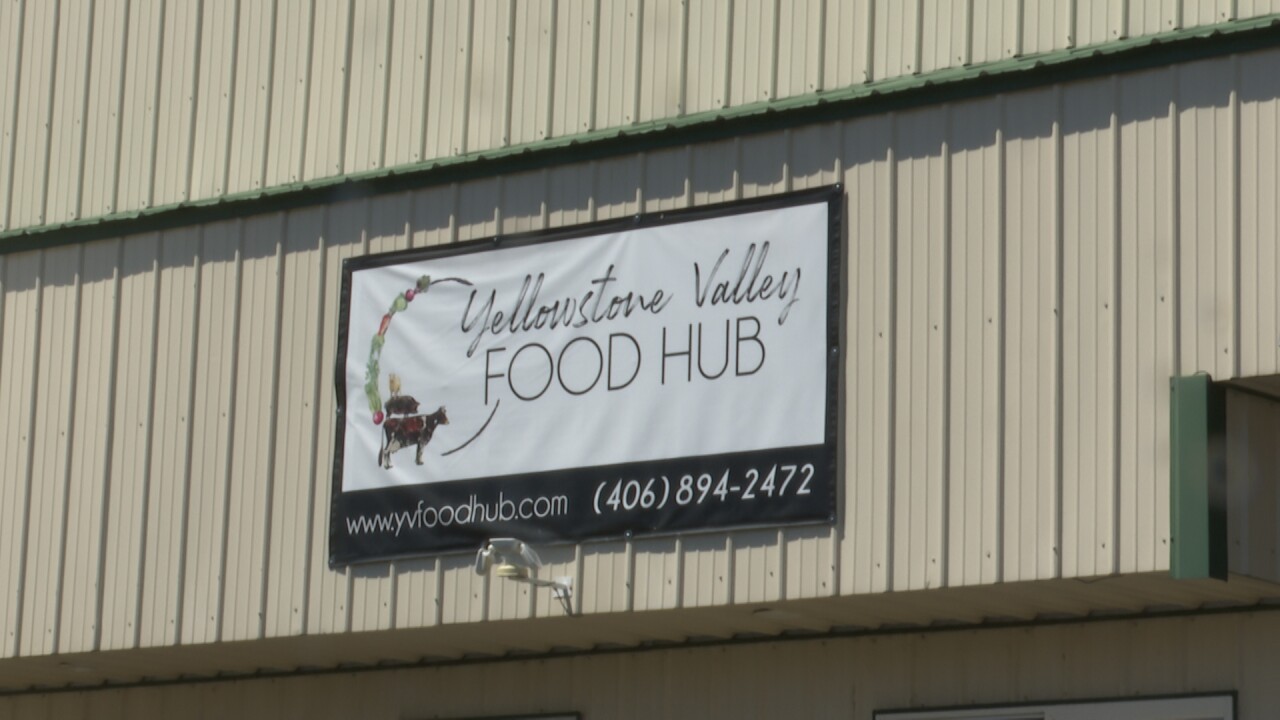Thursday is delivery day at the Yellowstone Valley Food Hub, and it’s a busy place, with orders being filled and ready to head out the door.
The food—everything from beef to vegetables to dairy and other products— is all locally grown by local farmers and ranchers, most of whom have small operations.
“We are just trying to make local food as accessible as possible,” says general manager Michelle Schahczenski.

The food hub got its start a few years ago as a collaboration between the Northern Plains Resource Council and local farmers and ranchers.
“We provide almost like this incubator for small producers. If we can provide a steady market, then somebody who has a really small farm that they are starting has a chance to get their feet on the ground if they know that they have this market that is already secured,” says Schahczenski.
Producers say that can really make a difference in meeting some of the challenges they face.
“A lot of the challenge was finding the money for marketing, finding the market research, just being able to get the word out there that you have local products available to the public,” says Sara Hollenbeck, whose company, High Five Meats, sells lamb and other products through the food hub.
As the operation grew, she also was able to use the food hub’s freezers to store her product.
“It's convenient, really. Before you are running around, you are trying to sell all over the place. The food hub really puts it all together. I can bring the product in. They handle the invoices, the payments some of the storage and delivery, so it works great for us,” says Tom Tschiea, who has a small grass-fed cattle operation near Bridger.
Veronica Evenson uses aquaponics to grow lettuce for her company Swanky Roots. She’s used the food hub since its inception and is also now starting to get the product into some grocery stores in Montana.
“I don’t know if people really understand what it takes to get to food. You are so used to just going to the grocery store and picking it off the shelf, so the food hub really connects the customers with the people growing it,” she says.

It became obvious during the early days of the pandemic how important those local producers can be.
“When there was a food shortage and no ground beef in the grocery stores, us producers had an abundance of beef and meat and vegetables available because we didn’t have to wait on distribution trucks because our food was here,” says Annika Charter-Williams, who raises cattle outside of Billings and sells the meat through the food hub.
“There’s so many benefits to keeping food local. I think there’s a statistic that about 80 cents of every dollar you spend locally stays within your economy, but also when you are buying local from producers from farmers from ranchers you are encouraging them to keep those sales in your city—so that you will always have access to that kind of food,” says Charter-Williams.
She also believes there is no better food than what is grown locally.
The process is simple. Customers can order online by Tuesday night and then every Thursday the food is delivered to several locations for pickup. They will also deliver to your home for an extra charge.
While orders soared early in the pandemic, they have leveled off since. Schahczenski is hoping people will continue to see the benefit of keeping local food as accessible as possible-- the main idea behind the Yellowstone Valley Food Hub.
Click here for more information on the Yellowstone Valley Food Hub.





